541 low relevance results shown for 'Red'. Prev |1|2|3|4|5|6|7|8|9|10|11|12|13|14|15|16|17|18|19|20|21|22 | Next | View 100 per page
Showing low relevance matches only. Return to normal search results
DNA - The transmission of heritable characteristics from one generation to the next involves DNA and genes ACSSU097 Year 6 Physical Sciences
Electrical Circuits - Electrical energy can be transferred and transformed in electrical circuits and can be generated from a range of sources ACSSU115 Year 7 Earth and Space Sciences
Earth Moon Sun - Predictable phenomena on Earth, including seasons and eclipses, are caused by the relative positions of the sun, Earth and the moon ACSSU229 Year 10 Physical Sciences
Forces and Motion - The motion of objects can be described and predicted using the laws of physics ACSBL029 Year 11 Biodiversity and the interconnectedness of life
Ecosystem dynamics - Models of ecosystem interactions (for example, food webs, successional models) can be used to predict the impact of change and are based on interpretation of and extrapolation from sample data (for example, data derived from ecosystem surveying techniques ACSBL085 Year 12 Heredity and continuity of life
DNA genes and the continuity of life - Frequencies of genotypes and phenotypes of offspring can be predicted using probability models, including Punnett squares, and by taking into consideration patterns of inheritance, including the effects of dominant, autosomal and sex-linked alleles and mu ACSBL090 Year 12 Heredity and continuity of life
Continuity of life on Earth - Natural selection occurs when selection pressures in the environment confer a selective advantage on a specific phenotype to enhance its survival and reproduction; this results in changes in allele frequency in the gene pool of a population ACSBL091 Year 12 Heredity and continuity of life
Continuity of life on Earth - In additional to environmental selection pressures, mutation, gene flow and genetic drift can contribute to changes in allele frequency in a population gene pool and results in microevolutionary change ACSCH056 Year 11 Molecular interactions and reactions
Intermolecular forces and gases - The shapes of molecules can be explained and predicted using three dimensional representations of electrons as charge clouds and using valence shell electron pair repulsion (VSEPR) theory ACSCH073 Year 11 Molecular interactions and reactions
Rates of chemical reactions - Catalysts, including enzymes and metal nanoparticles, affect the rate of certain reactions by providing an alternative reaction pathway with a reduced activation energy, hence increasing the proportion of collisions that lead to a chemical change ACSCH091 Year 12 Equilibrium acids and redox reactions
Chemical equilibrium systems - Over time, physical changes and reversible chemical reactions reach a state of dynamic equilibrium in a closed system, with the relative concentrations of products and reactants defining the position of equilibrium ACSCH096 Year 12 Equilibrium acids and redox reactions
Chemical equilibrium systems - Equilibrium position can be predicted qualitatively using equilibrium constants ACSCH097 Year 12 Equilibrium acids and redox reactions
Chemical equilibrium systems - Acids are substances that can act as proton (hydrogen ion) donors and can be classified as monoprotic or polyprotic depending on the number of protons donated by each molecule of the acid ACSCH098 Year 12 Equilibrium acids and redox reactions
Chemical equilibrium systems - The strength of acids is explained by the degree of ionisation at equilibrium in aqueous solution, which can be represented with chemical equations and equilibrium constants (Ka) ACSCH099 Year 12 Equilibrium acids and redox reactions
Chemical equilibrium systems - The relationship between acids and bases in equilibrium systems can be explained using the Brønsted Lowry model and represented using chemical equations that illustrate the transfer of hydrogen ions ACSCH100 Year 12 Equilibrium acids and redox reactions
Chemical equilibrium systems - The pH scale is a logarithmic scale and the pH of a solution can be calculated from the concentration of hydrogen ions; Kw can be used to calculate the concentration of hydrogen ions from the concentration of hydroxide ions in a solution ACSCH101 Year 12 Equilibrium acids and redox reactions
Chemical equilibrium systems - Acidbase indicators are weak acids or bases where the acidic form is of a different colour to the basic form ACSCH102 Year 12 Equilibrium acids and redox reactions
Chemical equilibrium systems - Volumetric analysis methods involving acidbase reactions rely on the identification of an equivalence point by measuring the associated change in pH, using chemical indicators or pH meters, to reveal an observable end point ACSCH103 Year 12 Equilibrium acids and redox reactions
Oxidation and reduction - A range of reactions, including displacement reactions of metals, combustion, corrosion, and electrochemical processes, can be modelled as redox reactions involving oxidation of one substance and reduction of another substance ACSCH104 Year 12 Equilibrium acids and redox reactions
Oxidation and reduction - Oxidation can be modelled as the loss of electrons from a chemical species, and reduction can be modelled as the gain of electrons by a chemical species; these processes can be represented using half equations ACSCH106 Year 12 Equilibrium acids and redox reactions
Oxidation and reduction - The relative strength of oxidising and reducing agents can be determined by comparing standard electrode potentials ACSCH107 Year 12 Equilibrium acids and redox reactions
Oxidation and reduction - Electrochemical cells, including galvanic and electrolytic cells, consist of oxidation and reduction half reactions connected via an external circuit that allows electrons to move from the anode (oxidation reaction) to the cathode (reduction reaction) ACSCH108 Year 12 Equilibrium acids and redox reactions
Oxidation and reduction - Galvanic cells, including fuel cells, generate an electrical potential difference from a spontaneous redox reaction; they can be represented as cell diagrams including anode and cathode halfequations ACSCH110 Year 12 Equilibrium acids and redox reactions
Oxidation and reduction - Cell potentials at standard conditions can be calculated from standard electrode potentials; these values can be used to compare cells constructed from different materials ACSCH130 Year 12 Structure synthesis and design
Properties and structure of organic materials - Data from analytical techniques, including mass spectrometry, xray crystallography and infrared spectroscopy, can be used to determine the structure of organic molecules, often using evidence from more than one technique ACSPH040 Year 11 Thermal nuclear and electrical physics
Electrical circuits - The energy available to charges moving in an electrical circuit is measured using electric potential difference, which is defined as the change in potential energy per unit charge between two defined points in the circuit ACSPH041 Year 11 Thermal nuclear and electrical physics
Electrical circuits - Energy is required to separate positive and negative charge carriers; charge separation produces an electrical potential difference that can be used to drive current in circuits ACSPH061 Year 11 Linear Motion and Waves
Linear motion and force - Representations, including graphs and vectors, and/or equations of motion, can be used qualitatively and quantitatively to describe and predict linear motion ACSPH064 Year 11 Linear Motion and Waves
Linear motion and force - Momentum is a property of moving objects; it is conserved in a closed system and may be transferred from one object to another when a force acts over a time interval ACSPH065 Year 11 Linear Motion and Waves
Linear motion and force - Energy is conserved in isolated systems and is transferred from one object to another when a force is applied over a distance; this causes work to be done and changes to kinetic and/or potential energy of objects ACSPH073 Year 11 Linear Motion and Waves
Waves - A mechanical system resonates when it is driven at one of its natural frequencies of oscillation; energy is transferred efficiently into systems under these conditions ACSPH076 Year 11 Linear Motion and Waves
Waves - A wave model explains a wide range of lightrelated phenomena including reflection, refraction, total internal reflection, dispersion, diffraction and interference; a transverse wave model is required to explain polarisation ACSPH021 Year 11 Thermal nuclear and electrical physics
Heating processes - Change of state involves internal energy changes to form or break bonds between atoms or molecules; latent heat is the energy required to be added to or removed from a system to change the state of the system
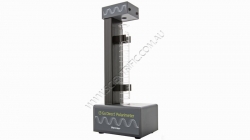
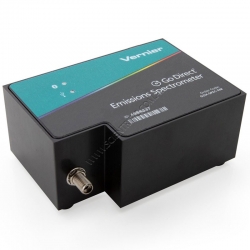
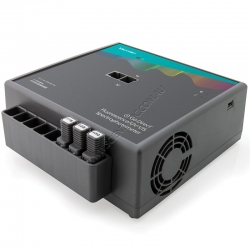
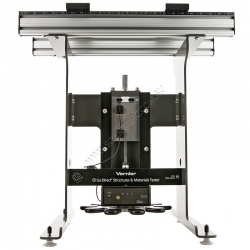
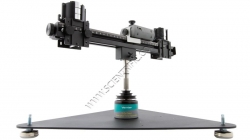
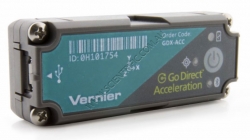
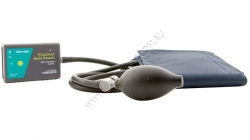

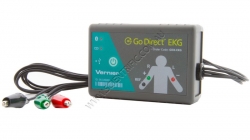
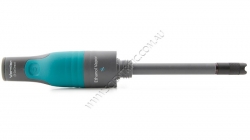
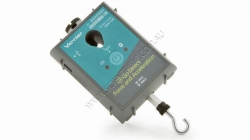

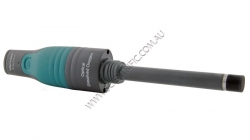

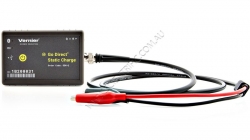
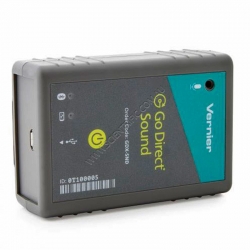




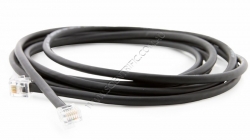
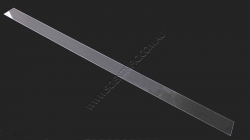
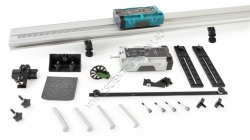
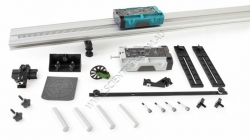
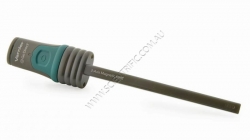
541 low relevance results shown for 'Red'. Prev |1|2|3|4|5|6|7|8|9|10|11|12|13|14|15|16|17|18|19|20|21|22 | Next | View 100 per page
Showing low relevance matches only. Return to normal search results
Curriculum resources related to 'Red'
ACSSU184 Year 10 Biological SciencesDNA - The transmission of heritable characteristics from one generation to the next involves DNA and genes ACSSU097 Year 6 Physical Sciences
Electrical Circuits - Electrical energy can be transferred and transformed in electrical circuits and can be generated from a range of sources ACSSU115 Year 7 Earth and Space Sciences
Earth Moon Sun - Predictable phenomena on Earth, including seasons and eclipses, are caused by the relative positions of the sun, Earth and the moon ACSSU229 Year 10 Physical Sciences
Forces and Motion - The motion of objects can be described and predicted using the laws of physics ACSBL029 Year 11 Biodiversity and the interconnectedness of life
Ecosystem dynamics - Models of ecosystem interactions (for example, food webs, successional models) can be used to predict the impact of change and are based on interpretation of and extrapolation from sample data (for example, data derived from ecosystem surveying techniques ACSBL085 Year 12 Heredity and continuity of life
DNA genes and the continuity of life - Frequencies of genotypes and phenotypes of offspring can be predicted using probability models, including Punnett squares, and by taking into consideration patterns of inheritance, including the effects of dominant, autosomal and sex-linked alleles and mu ACSBL090 Year 12 Heredity and continuity of life
Continuity of life on Earth - Natural selection occurs when selection pressures in the environment confer a selective advantage on a specific phenotype to enhance its survival and reproduction; this results in changes in allele frequency in the gene pool of a population ACSBL091 Year 12 Heredity and continuity of life
Continuity of life on Earth - In additional to environmental selection pressures, mutation, gene flow and genetic drift can contribute to changes in allele frequency in a population gene pool and results in microevolutionary change ACSCH056 Year 11 Molecular interactions and reactions
Intermolecular forces and gases - The shapes of molecules can be explained and predicted using three dimensional representations of electrons as charge clouds and using valence shell electron pair repulsion (VSEPR) theory ACSCH073 Year 11 Molecular interactions and reactions
Rates of chemical reactions - Catalysts, including enzymes and metal nanoparticles, affect the rate of certain reactions by providing an alternative reaction pathway with a reduced activation energy, hence increasing the proportion of collisions that lead to a chemical change ACSCH091 Year 12 Equilibrium acids and redox reactions
Chemical equilibrium systems - Over time, physical changes and reversible chemical reactions reach a state of dynamic equilibrium in a closed system, with the relative concentrations of products and reactants defining the position of equilibrium ACSCH096 Year 12 Equilibrium acids and redox reactions
Chemical equilibrium systems - Equilibrium position can be predicted qualitatively using equilibrium constants ACSCH097 Year 12 Equilibrium acids and redox reactions
Chemical equilibrium systems - Acids are substances that can act as proton (hydrogen ion) donors and can be classified as monoprotic or polyprotic depending on the number of protons donated by each molecule of the acid ACSCH098 Year 12 Equilibrium acids and redox reactions
Chemical equilibrium systems - The strength of acids is explained by the degree of ionisation at equilibrium in aqueous solution, which can be represented with chemical equations and equilibrium constants (Ka) ACSCH099 Year 12 Equilibrium acids and redox reactions
Chemical equilibrium systems - The relationship between acids and bases in equilibrium systems can be explained using the Brønsted Lowry model and represented using chemical equations that illustrate the transfer of hydrogen ions ACSCH100 Year 12 Equilibrium acids and redox reactions
Chemical equilibrium systems - The pH scale is a logarithmic scale and the pH of a solution can be calculated from the concentration of hydrogen ions; Kw can be used to calculate the concentration of hydrogen ions from the concentration of hydroxide ions in a solution ACSCH101 Year 12 Equilibrium acids and redox reactions
Chemical equilibrium systems - Acidbase indicators are weak acids or bases where the acidic form is of a different colour to the basic form ACSCH102 Year 12 Equilibrium acids and redox reactions
Chemical equilibrium systems - Volumetric analysis methods involving acidbase reactions rely on the identification of an equivalence point by measuring the associated change in pH, using chemical indicators or pH meters, to reveal an observable end point ACSCH103 Year 12 Equilibrium acids and redox reactions
Oxidation and reduction - A range of reactions, including displacement reactions of metals, combustion, corrosion, and electrochemical processes, can be modelled as redox reactions involving oxidation of one substance and reduction of another substance ACSCH104 Year 12 Equilibrium acids and redox reactions
Oxidation and reduction - Oxidation can be modelled as the loss of electrons from a chemical species, and reduction can be modelled as the gain of electrons by a chemical species; these processes can be represented using half equations ACSCH106 Year 12 Equilibrium acids and redox reactions
Oxidation and reduction - The relative strength of oxidising and reducing agents can be determined by comparing standard electrode potentials ACSCH107 Year 12 Equilibrium acids and redox reactions
Oxidation and reduction - Electrochemical cells, including galvanic and electrolytic cells, consist of oxidation and reduction half reactions connected via an external circuit that allows electrons to move from the anode (oxidation reaction) to the cathode (reduction reaction) ACSCH108 Year 12 Equilibrium acids and redox reactions
Oxidation and reduction - Galvanic cells, including fuel cells, generate an electrical potential difference from a spontaneous redox reaction; they can be represented as cell diagrams including anode and cathode halfequations ACSCH110 Year 12 Equilibrium acids and redox reactions
Oxidation and reduction - Cell potentials at standard conditions can be calculated from standard electrode potentials; these values can be used to compare cells constructed from different materials ACSCH130 Year 12 Structure synthesis and design
Properties and structure of organic materials - Data from analytical techniques, including mass spectrometry, xray crystallography and infrared spectroscopy, can be used to determine the structure of organic molecules, often using evidence from more than one technique ACSPH040 Year 11 Thermal nuclear and electrical physics
Electrical circuits - The energy available to charges moving in an electrical circuit is measured using electric potential difference, which is defined as the change in potential energy per unit charge between two defined points in the circuit ACSPH041 Year 11 Thermal nuclear and electrical physics
Electrical circuits - Energy is required to separate positive and negative charge carriers; charge separation produces an electrical potential difference that can be used to drive current in circuits ACSPH061 Year 11 Linear Motion and Waves
Linear motion and force - Representations, including graphs and vectors, and/or equations of motion, can be used qualitatively and quantitatively to describe and predict linear motion ACSPH064 Year 11 Linear Motion and Waves
Linear motion and force - Momentum is a property of moving objects; it is conserved in a closed system and may be transferred from one object to another when a force acts over a time interval ACSPH065 Year 11 Linear Motion and Waves
Linear motion and force - Energy is conserved in isolated systems and is transferred from one object to another when a force is applied over a distance; this causes work to be done and changes to kinetic and/or potential energy of objects ACSPH073 Year 11 Linear Motion and Waves
Waves - A mechanical system resonates when it is driven at one of its natural frequencies of oscillation; energy is transferred efficiently into systems under these conditions ACSPH076 Year 11 Linear Motion and Waves
Waves - A wave model explains a wide range of lightrelated phenomena including reflection, refraction, total internal reflection, dispersion, diffraction and interference; a transverse wave model is required to explain polarisation ACSPH021 Year 11 Thermal nuclear and electrical physics
Heating processes - Change of state involves internal energy changes to form or break bonds between atoms or molecules; latent heat is the energy required to be added to or removed from a system to change the state of the system
Products related to 'Red'

Vernier Go Direct Polarimeter
VERNIER GO DIRECT POLARIMETER
The concept of chirality can be difficult for students to visualize. Vernier's Go Direct Polarimeter provides a visual representation of this concept by measuring the optical rotation of optical isomers such as sugars, amino acids and protein...
Order code: GDX-POL

Vernier Go Direct Emissions Spectrometer
VERNIER GO DIRECT EMISSIONS SPECTROMETER
Elevate emissions analysis with the Vernier Go Direct Emissions Spectrometer. This device connects via Bluetooth® wireless technology or USB to a tablet, computer or LabQuest®. With the Vernier Go Direct Emissions Spectrometer, stu...
Order code: GDX-SPEC-EM-EURO

Vernier Go Direct Fluorescence/UV-VIS Spectrophotometer
VERNIER GO DIRECT FLUORESCENCE/UV-VIS SPECTROPHOTOMETER
Set your students up for success with the Vernier Go Direct Fluorescence/UV-VIS Spectrophotometer. Geared toward upper-level chemistry, this innovative device combines the functionality of a fluorometer with the powe...
Order code: GDX-SPEC-FUV-EURO

Vernier Go Direct Structures & Materials Tester
VERNIER GO DIRECT STRUCTURES AND MATERIALS TESTER
Vernier's Go Direct Structures and Materials Tester is an excellent tool for teaching engineering concepts and design processes. Students evaluate truss, bridge or other structure strength by measuring the applied load and...
Order code: GDX-VSMT

Vernier Go Direct CFA Motor Accessory Kit
VERNIER GO DIRECT MOTOR ACCESSORY KIT
This kit controls the rotational rate of the Vernier Go Direct Centripetal Force Apparatus so students can focus on a single variable and deepen their understanding of cause and effect. The Motor Accessory Kit drives the experiment se...
Order code: GDX-CFA-MAK-INTL

Vernier Go Direct Acceleration Sensor
VERNIER GO DIRECT ACCELERATION SENSOR
Collect acceleration, rotation and altitude data in the classroom or in the field. Vernier's Go Direct Acceleration Sensor connects wirelessly via Bluetooth® or wired via USB to your device.
This 3-axis acceleration sensor has two ...
Order code: GDX-ACC

Vernier Go Direct Blood Pressure Sensor
VERNIER GO DIRECT BLOOD PRESSURE SENSOR
Vernier's Go Direct™ Blood Pressure Sensor is affordable, non-invasive and measures systolic, diastolic and mean arterial human blood pressure using the oscillometric method.
Designed for versatility, Vernier Go Direct Blood Pre...
Order code: GDX-BP

Vernier Go Direct Cyclic Voltammetry System
VERNIER GO DIRECT CYCLIC VOLTAMMETRY SYSTEM
With the Vernier Go Direct Cyclic Voltammetry System, developed in part with Pine Research specialists in electrochemical research instrumentation, students can easily control and apply potential to a chemical system and measure...
Order code: GDX-CVS

Vernier Go Direct EKG Sensor
VERNIER GO DIRECT EKG SENSOR
The Vernier Go Direct EKG Sensor measures electrical activity in the heart and electrical signals produced during muscle contractions. The wireless options minimize the concern of cables getting caught and tangled during experiments. This sens...
Order code: GDX-EKG

Vernier Go Direct Ethanol Vapour Sensor
VERNIER GO DIRECT ETHANOL VAPOUR SENSOR
Vernier's Go Direct Ethanol Vapour Sensor measures the concentration of ethanol in the air above an aqueous sample. This sensor can be used in a wide variety of biological, agricultural, food and environmental studies.
Experimen...
Order code: GDX-ETOH

Vernier Go Direct Force and Acceleration Sensor
VERNIER GO DIRECT FORCE AND ACCELERATION SENSOR
Vernier's Go Direct Force and Acceleration Sensor couples a 3-axis accelerometer with a stable and accurate force sensor that measures forces as small as ±0.1N and up to ±50N. Measure pushes and pulls in the classroom or out...
Order code: GDX-FOR

Vernier Go Direct Hand Dynamometer
VERNIER GO DIRECT HAND DYNAMOMETER
Vernier's Go Direct Hand Dynamometer can be used to measure grip and pinch strength and to perform muscle fatigue studies. This sensor directly connects via Bluetooth® wireless technology or USB to student devices. Students can correlate...
Order code: GDX-HD

Vernier Go Direct Optical Dissolved Oxygen Probe
VERNIER GO DIRECT OPTICAL DISSOLVED OXYGEN PORBE
The Vernier Go Direct Optical Dissolved Oxygen Probe combines the power of multiple sensors to make it easy to measure dissolved oxygen concentration, water temperature and atmospheric pressure. It connects wirelessly via B...
Order code: GDX-ODO

Vernier Go Direct Projectile Launcher
VERNIER GO DIRECT PROJECTILE LAUNCHER
Use the Vernier Go Direct Projectile Launcher to investigate important concepts in two-dimensional kinematics. Launch steel balls at angles between 0 and 90 degrees and over distances up to 2.5m
The solid, heavy base provides an ea...
Order code: GDX-PL

Vernier Go Direct Static Charge
VERNIER GO DIRECT STATIC CHARGE
The Vernier Go Direct Static Charge Sensor is completely wireless and provides educators and students with enhanced accuracy in measurements of positive and negative charges. Unlike a traditional electroscope, this sensor offers a means for...
Order code: GDX-Q

Vernier Go Direct Sound Sensor
VERNIER GO DIRECT SOUND SENSOR
The Vernier Go Direct Sound Sensor is used to easily capture and evaluate waveforms. It directly connects via Bluetooth® wireless technology or wired via USB.
Collect sound data wirelessly with the snap of your fingers. With sound-trigger...
Order code: GDX-SND

Vernier Go Direct Spirometer
VERNIER GO DIRECT SPIROMETER
Vernier's Go Direct™ Spirometer is small, lightweight, designed to make human respiratory measurements easy and an excellent choice for human physiology classes.
This is a multi-channel sensor that reports air pressure, flow rate, volume and...
Order code: GDX-SPR

Vernier Go Direct Photogate
VERNIER GO DIRECT PHOTOGATE
The Vernier Go Direct Photogate is a double-gate sensor that includes two photogates built into the sensor arms to accurately measure velocity and acceleration. It connects via Bluetooth® wireless technology or via USB to your device.
With V...
Order code: GDX-VPG

Vernier Go Direct Weather Sensor
VERNIER GO DIRECT WEATHER SENSOR ONLY
Easily monitor a wide variety of environmental factors with just one sensor.
The wireless handheld Vernier Go Direct Weather Sensor measures:
• Wind Speed
• Wind Chill
• Temperature
• Heat Index
• Dew Point
• Relative Humidity
...
Order code: GDX-WTHR

Vernier Go Direct Weather System with Vane
VERNIER GO DIRECT WEATHER SYSTEM
Vernier's Go Direct Weather System includes an affordable, wireless handheld sensor used to easily monitor a wide variety of environmental factors and a Vernier Go Direct Weather Vane accessory required to report wind direction.
The Wea...
Order code: GDX-WTVA

Vernier Go Direct Photogate Timing Cable
VERNIER GO DIRECT PHOTOGATE TIMING CABLE
Use a Vernier Go Direct Photogate Timing Cable to daisy-chain two Vernier Go Direct Photogates together to enhance timing accuracy for experiments that use two photogates.
Connecting Vernier Go Direct Photogates with this 2.5m ca...
Order code: VPG-CB-GDX

Vernier Cart Guide Pack 10
VERNIER CART GUIDE
The Vernier Cart Guide is a cost-effective, easy-to-store accessory that facilitates various explorations by keeping any Vernier dynamics cart moving along a straight-line path. The Vernier Cart Guide also helps make it easy to take your dynamics experi...
Order code: CGUIDE-10

Vernier Dynamics Cart and Track System
VERNIER DYNAMICS CART AND TRACK SYSTEM
The Dynamics Cart and Track System provides students with the tools they need to explore kinematics, dynamics, momentum and energy. This versatile system can also be easily adapted to study optics, colour and diffraction.
The Vern...
Order code: DTS

Vernier Dynamics Track System Long
VERNIER DYNAMICS TRACK SYSTEM LONG
The Dynamics Cart and Track System provides students with the tools they need to explore kinematics, dynamics, momentum and energy. This versatile system can also be easily adapted to study optics, colour and diffraction.
The Vernier ...
Order code: DTS-LONG

Vernier Go Direct 3-Axis Magnetic Field Sensor
VERNIER GO DIRECT 3-AXIS MAGNETIC FIELD SENSOR
Vernier's Go Direct™ 3-Axis Magnetic Field Sensor measures the components of the magnetic field along three orthogonal axes. This allows you to determine the magnitude and direction of the magnetic field at any point in space...
Order code: GDX-3MG
541 low relevance results shown for 'Red'. Prev |1|2|3|4|5|6|7|8|9|10|11|12|13|14|15|16|17|18|19|20|21|22 | Next | View 100 per page



 ,
,